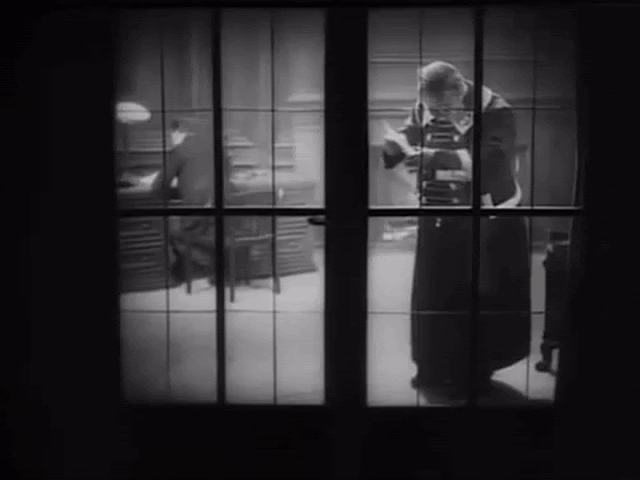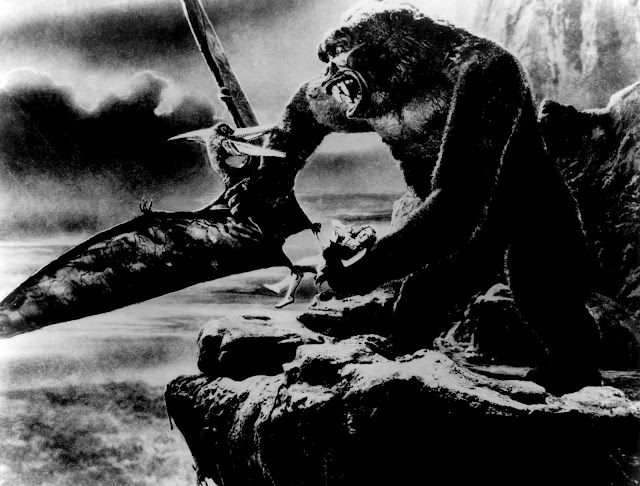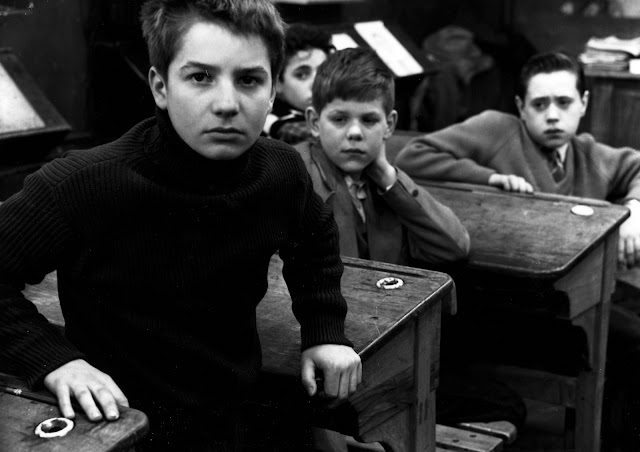The Last Laugh (1924)
F.W. Murnau's "The Last Laugh"
In the 1920s, Weimar Germany was in a state of unrest. Currency devaluation, food shortages, and economic turmoil were sweeping the nation. Its film industry, however economically deprived it was, was artistically thriving. The creative explosion from German filmmakers caused Hollywood to take notice. German and Hollywood producers created a co-operative venture, which led to a migration of German directors to Hollywood. It also meant that Hollywood and other English-speaking directors headed to Germany to learn from the best. One of these directors was Alfred Hitchock, who studied under F.W. Murnau. When working with Murnau, Hitchcock was very impressed with Murnau's attempt at an 'unchained camera' technique, which was employed while making "The Last Laugh." Hitchcock was so influenced by Murnau, that he called "The Last Laugh" an 'almost perfect film.'
This 'almost perfect film' follows an aging doorman who takes great pride in his position at a high-end hotel. However, he discovers one day that he has been demoted to a bathroom attendant. He tries to conceal his demotion from his friends and family, only to be discovered anyway. However, because he is stealing back his uniform every night so that he can walk back into his apartment in front of everyone, they believe that he has been lying this whole time. Ashamed, the doorman returns his uniform and is given pity by the night watchman, who covers him with a blanket while he falls asleep in the bathroom. In the end, we are shown a title card that reads, "Here our story should really end, for in actual life, the forlorn old man would have little to look forward to but death. The author took pity on him, however, and provided an improbable epilogue." Then, we see the old man win a small fortune. He takes the night watchman to dine with him and is kind to everyone.
Because of the state of the German economy, German citizens were in a constant state of fear over unemployment and poverty. Murnau, with his previous film "Phantom," showcased these German anxieties. With "The Last Laugh," he takes that up a notch. With the aging doorman losing his job, we see a man fall to the depths of pity and shame. However, it is not the loss of income that is the singular focus of the film. Rather, it is the loss of the uniform. Lotte Eisner, a German critic, stated that the film was "pre-eminently a German tragedy, and can only be understood where uniform is king, not to say God. A non-German mind will have difficulty in comprehending all its tragic implications." With that statement, there appears to be a level of anxiety held within the film that is not palpable to the common viewer. This German-specific fear of loss of social authority was filmed in perhaps one of the most uniquely revolutionary ways in cinema.
The thing that makes "The Last Laugh" so revolutionary is not the plot or themes. Rather, it is the camerawork that makes this film 'almost perfect.' In the 1920s, German Expressionism was already the most artistic form of filmmaking ever created. Expressionism involved utilizing visuals to convey the subjectivity of the characters. Murnau, rather than try and paint the story with visuals, instead used the camera to enhance the subjectivity of the protagonist. Murnau wanted to tell a story that was completely told through the medium of film. He wanted film to distinguish itself far from the medium of stage or novel. To do this, he wanted no safety net whatsoever. This also meant no title cards. Aside from the opening title card, as well as the one at the end mentioned previously, there are no title cards in the film. This means that viewers can never know what any of the characters are saying. This meant that the story had to be strictly told via visuality. According to Murnau, "All our efforts must be directed towards abstracting everything that isn't the true domain of the cinema. Everything that is trivial and acquired from other sources, all the tricks, devices, and cliches inherited from the stage and from books." Murnau used an 'unchained camera' to accomplish his vision. The camera moves freely from left to right, and even more surprisingly, it moves forward on a dolly. Because a dolly had never been used before, the crew had to assemble a dolly on their own, using parts of a baby carriage. The effect is phenomenal, as the camera appears to glide through the world Murnau has created. Films at the time were only accustomed to staging things like a play, while the stationary camera caught the action and sometimes moved from left to right. This new camera style Murnau employs creates an unreached dimensionality never experienced before. The first camera move this viewer noticed was when the doorman was reading his demotion letter. Because this approach had never been done before, the sudden movement of the camera forward into the frame is quite shocking. This shock mirrors the doorman's shock of being demoted.
Throughout the rest of the film, the camera movements are meant to continue this anxiety-driven psychological collapse of the doorman. Camera movements are not the only creative means of expression Murnau uses in the film. The moving of the camera, the blurring of part of the screen, focusing and defocusing, and using camera angles in new and unique perspectives all contributed to a unique experience for viewers. Below are some examples of how Murnau gets creative with visual storytelling.








Comments
Post a Comment